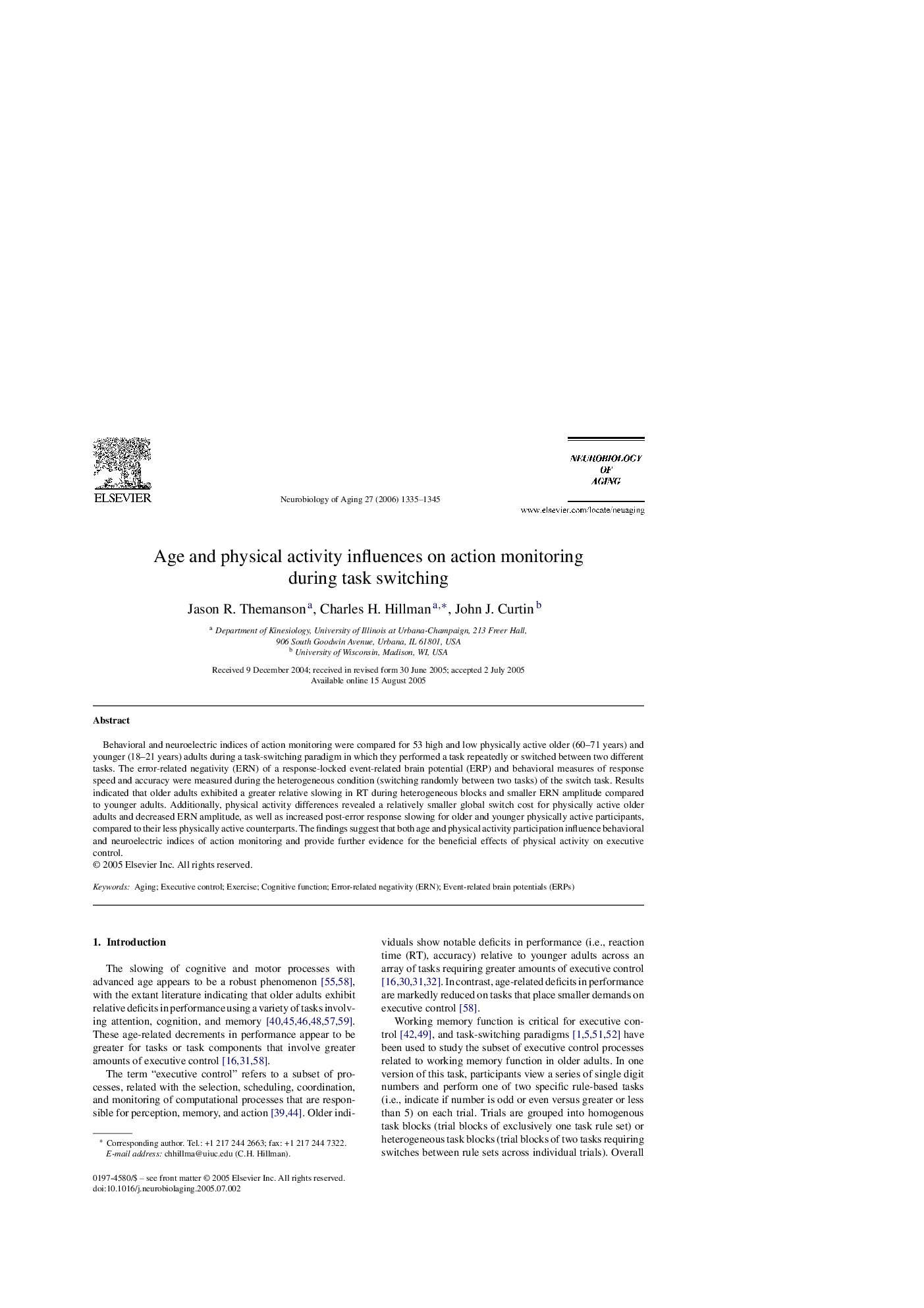| Article ID | Journal | Published Year | Pages | File Type |
|---|---|---|---|---|
| 329551 | Neurobiology of Aging | 2006 | 11 Pages |
Behavioral and neuroelectric indices of action monitoring were compared for 53 high and low physically active older (60–71 years) and younger (18–21 years) adults during a task-switching paradigm in which they performed a task repeatedly or switched between two different tasks. The error-related negativity (ERN) of a response-locked event-related brain potential (ERP) and behavioral measures of response speed and accuracy were measured during the heterogeneous condition (switching randomly between two tasks) of the switch task. Results indicated that older adults exhibited a greater relative slowing in RT during heterogeneous blocks and smaller ERN amplitude compared to younger adults. Additionally, physical activity differences revealed a relatively smaller global switch cost for physically active older adults and decreased ERN amplitude, as well as increased post-error response slowing for older and younger physically active participants, compared to their less physically active counterparts. The findings suggest that both age and physical activity participation influence behavioral and neuroelectric indices of action monitoring and provide further evidence for the beneficial effects of physical activity on executive control.
